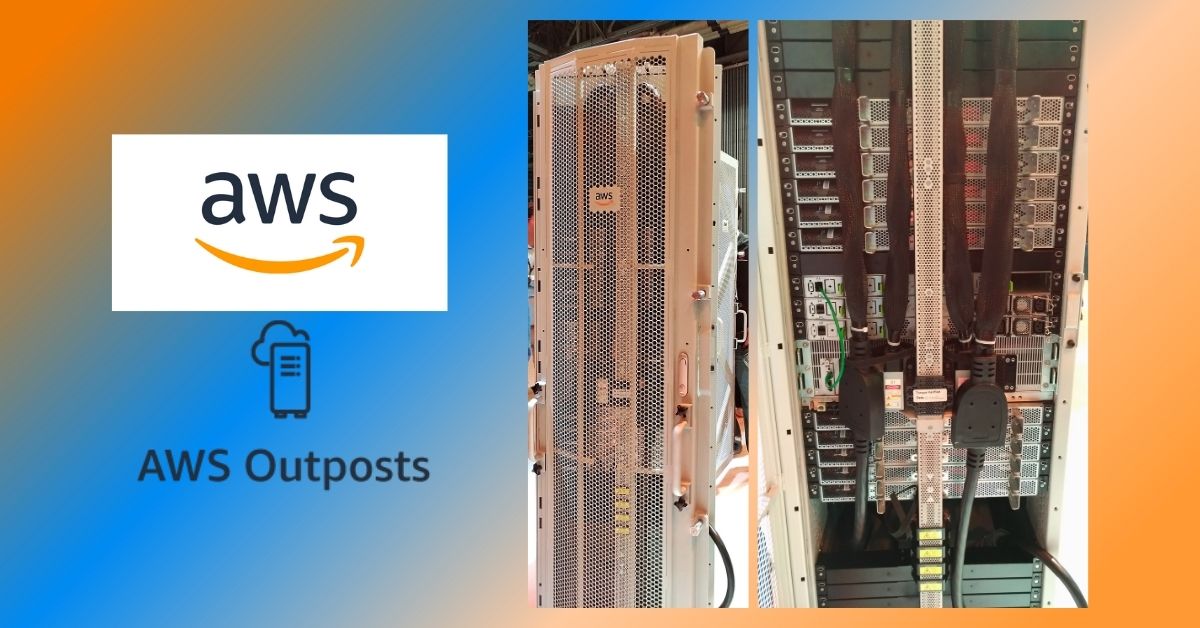For the past fourteen (14) years, Amazon brings us the world’s most comprehensive and broadly adopted cloud platform popularly known as AWS (Amazon Web Services).
Even if most of the business requirements can now run in the cloud, it is still a fact that some workloads still need to be on-premise like applications that are sensitive to latency and variability in latency, and applications that process data locally.
Imagine running Amazon EC2, Amazon EBS, Amazon S3, container-based services such as Amazon EKS, database services like Amazon RDS locally, and analytics services such as Amazon EMR on-premises. This is now possible, thanks to AWS Outposts. Your organization can seamlessly extend your Amazon Virtual Private Cloud on-premises and run some AWS services locally on Outposts to connect to a broad range of services available in the local AWS Region. What’s more awesome is that you can actually use the same AWS APIs, tools, and security controls to run, manage, and secure your applications on-premises just as in the cloud.
What is AWS Outposts?
AWS Outposts is a set of physical hardware and software that can be deployed on the ground (customer premises) and is fully managed by Amazon Web Services. It is the same AWS design infrastructure that customers can enjoy from the AWS Data Centers, as if in AWS Regions.
As a fully assembled, ready-to-be rolled-out system that uses the industry-standard 42U rack, an AWS Outposts measures 24-inch wide, 48-inch deep, and 80-inch tall. Once installed, it can be plugged into power and network utilizing a centralized redundant power conversion unit and DC distribution system for higher reliability, energy efficiency, and easier serviceability. The package contains redundant active components that include top of rack switches and hot spare hosts.
AWS Outposts Security
Before a new equipment or infrastructure is selected or even deployed, one question pop-up among organizations: security.
AWS Outposts, as a physical system, has built-in tamper protection, comes in an enclosed rack with a lockable door, and a removable and destroyable hardware security key on each server.
From the software side, data on AWS Outposts is encrypted, not to discount the fact that the network connection to the AWS Region is also secured.
One thing prospective AWS Outposts users have to consider: the physical security of the AWS Outposts location is the customer’s responsibility.
“AWS Outposts delivers fully managed, configurable compute storage and services that works seamlessly with the AWS Region. Customers in the Philippines that have low-latency requirements and processing requirements that needs to be closer where their clients are will benefit with AWS Outposts,” according to Paul Chen, Head of Solutions Architecture – ASEAN at Amazon Web Services.
Gettings Started with AWS Outposts

Getting started with AWS Outposts is as easy as 1-2-3: order, install, and launch. A potential Outposts customer will simply have to select the compute and storage capacity, then AWS will deliver and install the unit. Launching will be a breeze at it uses standard AWS APIs or Management Console, and run AWS resources locally.
Globe Telecom & Mynt Welcome AWS Outposts in the Philippines
Some of the best use-cases for AWS Outposts are telecommunications and financial services. In the Philippines, Globe Telecom and Mynt (Globe Fintech Innovations, Inc. — the company behind GCash) welcome the availability of AWS Outposts locally.
The use of cloud services and tools to orchestrate, update, scale, and manage the lifecycle of Virtual Network Functions (VNFs) across the cloud and on-premises makes AWS Outposts the best choice infrastructure in the telecommunications industry.
Whereas, build next-generation trading and exchange platforms that will serve all users at low latency using AWS services and programming interfaces clearly defines the need for AWS Outposts for the financial services sector. Delivering banking, payments processing, and risk management services to customers from in-country locations to meet data locality requirements are some of the key advantages of using AWS Outposts.




